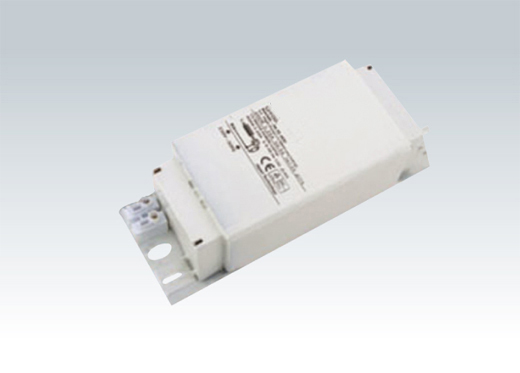The core and coil ballasts method creates a huge amount of inductive reactive power, significantly
exceeding the magnitude of active power, but this reactive power can easily and cheaply be
compensated without risk of any interferences, if done adequately (see section 5). The
electronic ballast does not – or should not – produce substantial amounts of fundamental reactive power (displacement power factor DPF or cosφ). It need not but may be designed to
operate on different mains frequencies, including DC, and different voltages, thereby also compensating any input voltage variances. The decisive argument put forward for its use is, however, the energy saving achieved, not so much by lower internal losses in the ballast itself, but rather by an efficiency improvement of the lamp when operated at the high frequency supplied
from the output terminals of such electronic ballast. For this reason they feed less power into the
lamp than a magnetic ballast does. However, electronic ballasts are several times more expensive than the plain passive magnetic models and much more susceptible to certain disturbances and are likely to become themselves a source of disturbances.
core and coil ballasts limit the flow of current to the light but do not change the frequency of the input power. The lamp then illuminates on each half-cycle of the power source. This is why many fluorescent and neon lights visibly flicker. Since the light illuminates on half-cycles, the rate of flicker is twice the frequency of the power source, meaning the light will flicker at 100Hz or 120Hz. A lead-lag lighting ballast can minimize flicker when connected to two lamps by alternating the flow of current to them: one leading the frequency of the input power and the other lagging behind it.
A more modern type of lighting ballast is electronic instead of electromagnetic. An electronic lighting ballast uses solid state circuitry to transform voltage, but unlike electrocore and coil ballasts, can also alter the frequency of power. This means that an electronic lighting ballast can greatly reduce or eliminate any flicker in the lamps. Because it uses solid-state circuitry instead of magnetic coils, it is also more efficient and therefore runs cooler.
Because of their greater efficiency and ability to reduce flicker,
electronic ballasts are more popular than electrocore and coil ballasts, and are often used to replace them. A few applications, however, require an electromagnetic lighting ballast, such as ballasts that must preheat or ballasts for extremely high output lamps.
